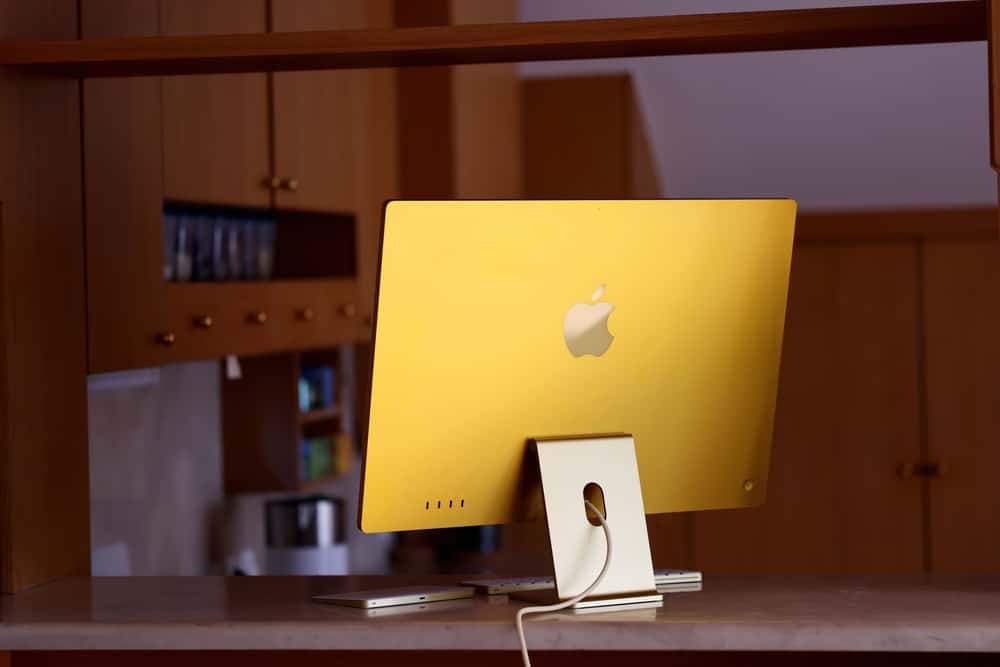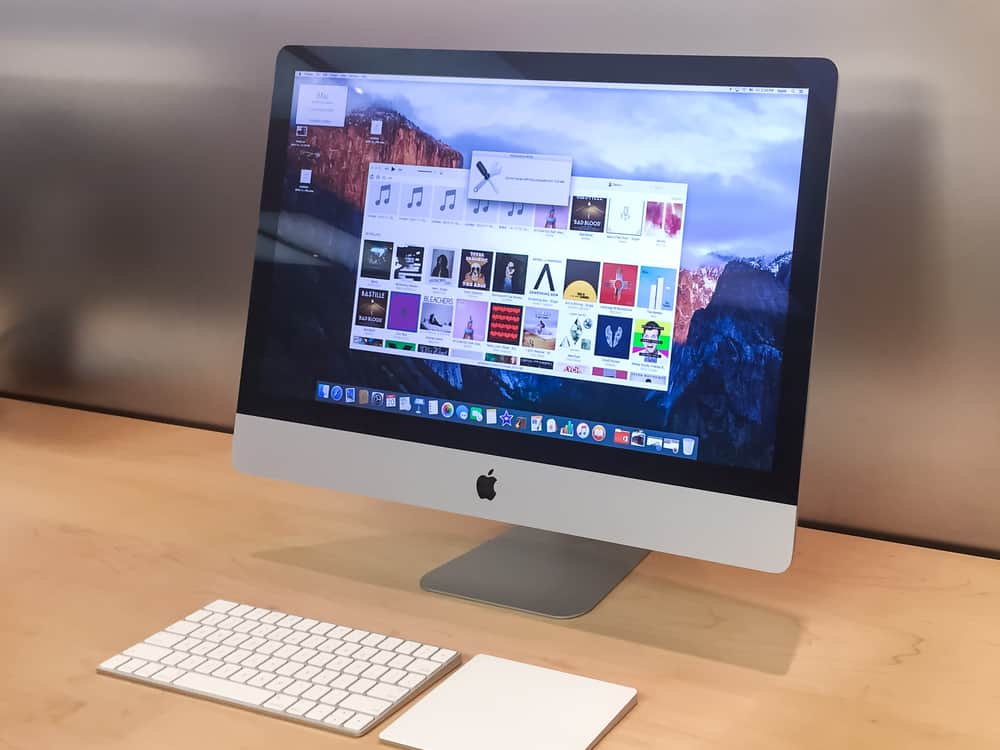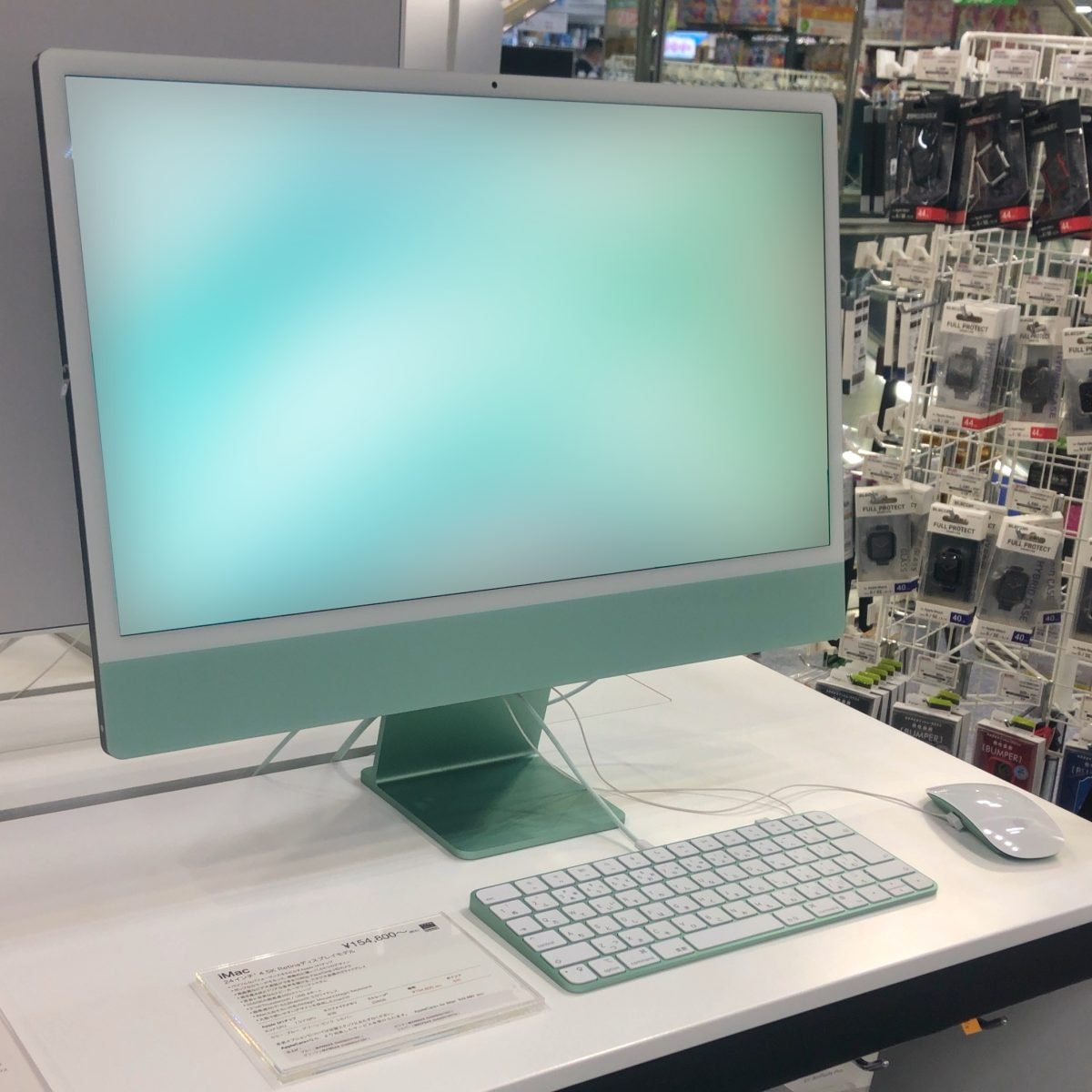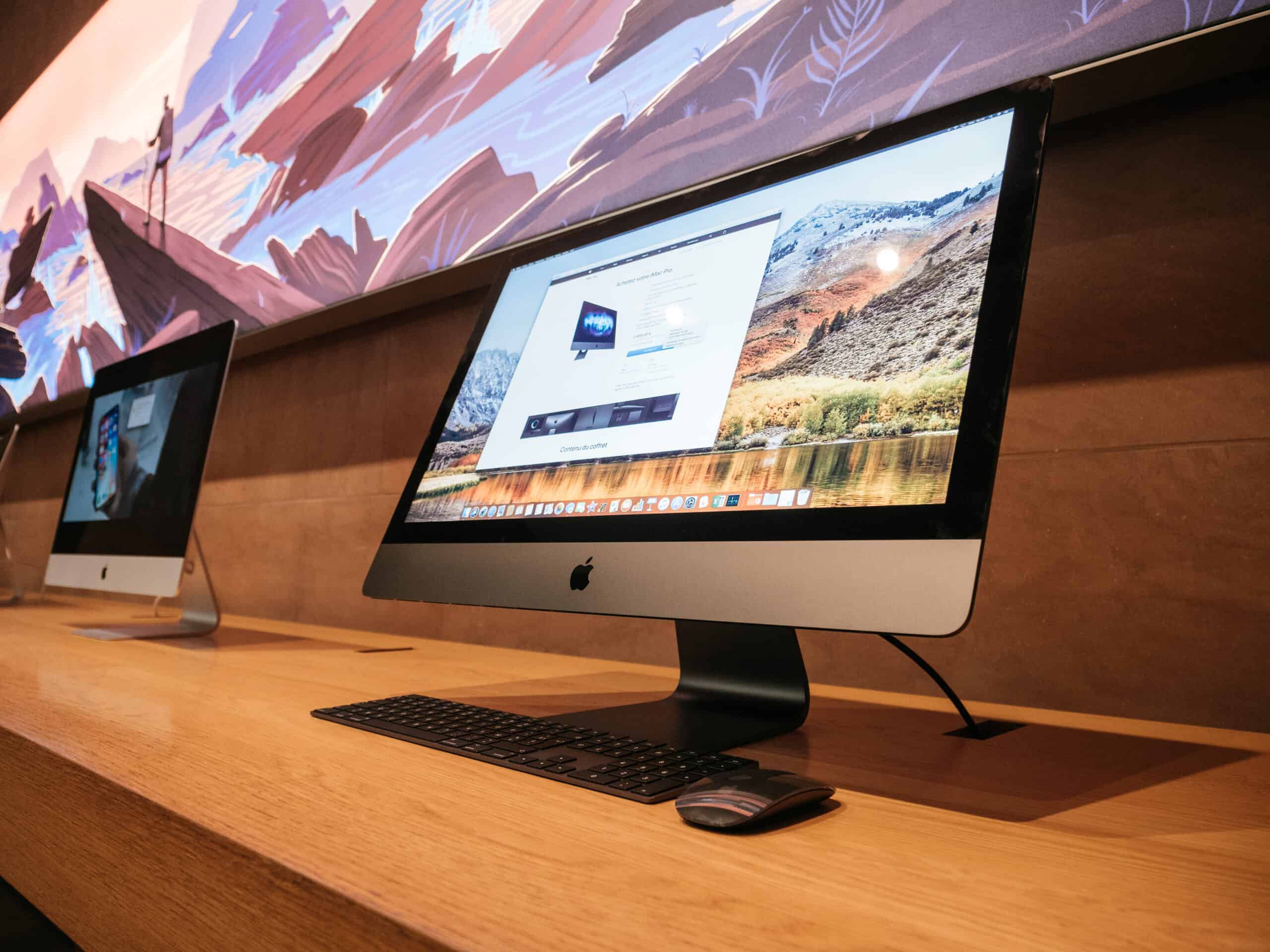One of the oldest and most important computers in the Apple lineup, the iMac, can be attributed to much of Apple’s success in the computer world today. With the release of the iMac G3 in 2000 and its colorful all-in-one design created by Jony Ive himself, Apple was better positioned to steal market share from Windows.
The first and now iconic product released by Steve Jobs upon his return as Apple’s CEO, the iMac is a company staple today. Even as the world has moved increasingly into laptop life, there is still a place for a powerful and well-designed all-in-one desktop experience. Led by Apple’s silicon M-series processor, the newest Apple iMac is arguably the company’s best-ever computer for most people.
Quick Facts
- Release Date
- 15/08/2008
- Original price
- $1,299
Apple iMac: History
Apple was founded by Steve Jobs and Steve Wozniak in 1976, long before the iMac was even a thought. Throughout Apple’s history, innovation has always been a top priority. With the release of the Macintosh in 1984, the world got its first taste of an all-in-one desktop computer, which would prove to be the earliest ancestor.
The Macintosh was praised for its groundbreaking design. Never before had such a compact yet powerful computer been mass-produced for the consumer market. With such massive success, the Macintosh remained popular long after being discontinued. When Steve Jobs was forced out of Apple in 1985, the company could not replicate this success again.
While Apple struggled over the next ten years, Steve Jobs took some of his most trusted engineers from Apple to start his own software company, Next. The next decade saw development in new computers stagnating, and Apple was on the verge of bankruptcy by the mid-1990s.
In 1997, Steve Jobs made his famed return to Apple. At this point, the company needed a bold new plan to turn it around, and Steve was just the visionary they needed. With the release of the first iMac marking the start of a new chapter, Apple’s success skyrocketed in the following years. While the iMac was one of Steve’s first major innovations at the company, it was soon followed up by the first iPod in 2001 and the revolutionary iPhone in 2007.
Apple iMac: A Visual Timeline
One of the most exciting parts of the iMac G3 was that it was the first computer in Apple’s lineup to give customers access to the Internet. This is just one of the many awesome details you’ll uncover by watching Flatlife’s video, which examines the entire evolution of the iMac lineup.
Looking at a visual representation of how much the iMac has slimmed down and improved over time is something of a catch-all history of the entire computer market. Today, the iMac is as slim as ever, but this video shows you just how well the iMac lineup has really improved in an easy-to-digest way.
Apple iMac: Different Versions
The Apple iMac has evolved so drastically over the generations that the early models are hardly recognizable compared to the latest models. Let’s explore each generation of the iMac in a little more detail.
Apple iMac G3
| Release Date | August 1998 |
| Processor | PowerPC G3 |
| Max Operating System | Mac OS 10.2 |
| Storage | 4GB base to 60GB max |
| Display | 15-inch CRT |
| Original Base Price | $1,299 |
The original Apple iMac was unlike anything we have ever seen. Initially launched in 1998, the computer took the world by storm. Many critics praised the creative design and quirky colors like blue, turquoise, green, orange, and red. Besides a fresh new design, the iMac was a competitive performance computer.
Packed with a 233MHz PowerPC G3 processor, the iMac was one of the most powerful systems on the market. With 32MB of RAM and a 4GB hard drive included by default, the computer could run the most demanding creative and graphic design programs. Coupled with the 15-inch CRT display and ATI Rage Pro graphics, the iMac was immediately hailed by the creative professional community as the ideal computer for artists and designers.
A departure from Apple’s design patterns at the time, the iMac G3 stood out from every other computer on the market. With the “i” prefix, Apple intended to promote the iMac as a revolutionary new system for using the Internet. This model was the first Apple computer with USB ports and no built-in floppy drive. This new standard provided an alternative to the plethora of confusing connectors like ADB, serial, and parallel used at the time.
Apple iMac G4

| Release Date | January 2002 |
| Processor | PowerPC G4 |
| Max Operating System | Mac OS 10.4 |
| Storage | 40GB base to 160GB max |
| Display | 15, 17, and 20-inch LCD |
| Original Base Price | $1,299 |
The next release sported an even more quirky and unique design. While still an all-in-one desktop computer, the iMac G4’s design was unlike before. The LCD was mounted on a swivel arm, allowing it to rotate at almost any angle. The components were housed in the base of the computer, making the whole system look similar to a lamp. This model was lovingly referred to as the “lampshade iMac.”
With an even more powerful processor than the previous generation, the G4 included a PowerPC G4 CPU running at 700MHz. The standard configuration included 256MB of RAM and a 40GB hard drive. WiFi and ethernet were standard features, and later models of the G4 included early versions of Bluetooth. Additionally, a tray-loading optical drive for playing CDs and DVDs was built into the front of the iMac’s base.
This iMac also featured the newest addition of Mac OS, known as Mac OS “X.” This new operating system eventually made its way to every computer in Apple’s lineup. While the iMac G4 was popular, it wasn’t long before Apple created the next generation to replace it.
Apple iMac G5
| Release Date | August 2004 |
| Processor | PowerPC G5 |
| Max Operating System | Mac OS 10.5 |
| Storage | 40GB base to 500GB max |
| Display | 17 and 20-inch LCD |
| Original Base Price | $1,299 |
Apple turned the tables yet again with the release of the next computer. The new iMac G5 featured a 17-inch or 20-inch LCD panel, with the entire computer housed behind the display. An aluminum hinge suspended the whole thing, making this new design unlike other computers on the market at the time.
The processor has improved over the previous generation. It now sports a base clock speed of 1.60GHz and is coupled with a “velocity engine” vector processing unit for improved performance. The iMac G5 was unique because it was the last PowerPC processor before Apple switched to Intel.
Polycarbonate Intel Apple iMac
| Release Date | January 2006 |
| Processor | Intel Core Duo |
| Operating System | Mac OS 10.6 |
| Storage | 80GB base to 750GB max |
| Display | 17, 20, and 24-inch LCD |
| Original Base Price | $1,299 |
Apple didn’t plan for the first Intel iMac to be a significant redesign. In fact, they wanted to make the switch to Intel as quietly as possible, making the polycarbonate strikingly similar to the iMac G5. The essential difference was in the processor. The limitations of the PowerPC platform were becoming apparent, and Apple desperately needed more powerful CPUs. This made the switch to Intel a necessity.
Connectivity is similar to the previous generation, with three USB 2.0 ports, two Firewire ports, and Apple Airport Extreme WiFi. New features like the Apple “iSight” webcam were standard on the polycarbonate iMac. Additionally, this model featured a mini-DVI port for connecting an external monitor.
Aluminum Apple iMac
| Release Date | August 2007 |
| Processor | Intel Core 2 Duo |
| Operating System | Mac OS 10.11 |
| Storage | 250GB base to 1TB max |
| Display | 20 and 24-inch |
| Original Base Price | $1,199 |
By 2007, Apple was reimaging its entire product lineup’s style. The new generation of iMacs and MacBooks featured the aluminum style that would be used for the next decade. While this generation did not introduce many new features, the hardware was still significantly improved.
With Intel’s latest Core 2 Duo processors and 1GB of RAM standard, performance was noticeably improved from the previous model. Connectivity is similar to the previous generation, with three USB 2.0 ports, two Firewire ports, and WiFi and Bluetooth.
Unibody Apple iMac
| Release Date | October 2009 |
| Processor | Intel Core 2 Duo, i3, i5, i7 |
| Max Operating System | Mac OS 10.13 |
| Storage | Up to 2TB hard drive or 256GB SSD |
| Display | 21.5 and 27-inch LCD |
| Original Base Price | $1,199 |
Apple redesigned the iMac shortly after, and the next generation featured a “unibody” design. Instead of combining multiple pieces, the new design is milled out of a single piece of aluminum. The components are then mounted inside, directly behind the display. This generation featured similar hardware yet again but with modestly upgraded performance.
Additionally, while the unibody started with Intel Core 2 Duo processors, Apple quickly used the new Core i-series processors such as the i3, i5, and i7. The display is also improved, with a 16:9 aspect ratio and 1920 by 1080 resolution. Overall, this generation is a noticeable improvement over the older models.
Slim Unibody Apple iMac
| Release Date | November 2012 |
| Processor | Intel Core i3, i5, i7 |
| Max Operating System | Mac OS 11 |
| Storage | Up to 3TB hard drive or up to 1TB SSD |
| Display | 21.5 and 27-inch LED |
| Original Base Price | $1,299 |
As the new decade began, computers began to get slimmer. Apple followed suit by redesigning the new iMac with a more slender case. By removing the optical drive and reimagining several key factors of the layout, Apple could significantly slim down the new iMac.
Additionally, the display is glued into the case instead of held in with magnets like the previous generation. While this made it more difficult to service or upgrade components, it did decrease the overall thickness of the computer.
Gigabit Ethernet, 802.11n, and Bluetooth 4.0 are included, as well as three USB 3.0 ports and two Thunderbolt ports. In addition to being thinner, the new generation also features a faster CPU, faster RAM, and better graphics.
Retina Apple iMac

| Release Date | October 2014 |
| Processor | Intel Core i3, i5, i7, or i9 |
| Operating System | Mac OS 12 |
| Storage | Up to 3TB hard drive or up to 2TB SSD |
| Display | 21.5 and 27-inch LED |
| Original Base Price | $1,099 |
The retina iMac is a modest improvement over the previous generation, with most upgrades focused on the display. Featuring a 5K resolution LED-backlit display on the 27-inch models, the iMac’s new display was cutting-edge at the time and is still very competitive.
The retina iMac also offers improved processing power with the Intel processors’ new “Haswell” generation. This iMac, the last model with this feature, can still be upgraded in RAM and hard drives.
Although the enclosure and display are essentially the same as those introduced in the previous models, this model has a much higher resolution display, a faster processor, an improved graphics processor, and Thunderbolt 2 support out of the box.
Apple iMac Silicon

| Release Date | November 2024 |
| Processor | Apple M4 |
| Operating System | Max OS 15 |
| Storage | Up to 2TB SSD |
| Display | 24-inch 4.5K Retina Display |
| Original Base Price | $1,299 |
The “Silicon” iMac is the newest model and the first model featuring the new M1 processors. With an 8-core CPU and an 8-core integrated GPU, the M4 is the most powerful and efficient chip ever used in an iMac. Besides an improved processor, the M4 iMac also features onboard RAM and SSD. However, this decision has its drawbacks—users cannot upgrade or replace components once they buy the system.
When you look at the iMac’s slim and colorful casing, the design choices to remove upgradeable components start to make sense. The case is extremely slender and is the thinnest iMac ever made. While you don’t get the workstation level of performance of a Mac Pro tower, the iMac is still more than capable of running demanding applications.
Additionally, the iMac is offered in multiple colors, similar to the style of the first iMac G3. If you want to add a splash of color to your workspace, the iMac does not disappoint. Besides an attractive design, this iMac offers a superb 4.5K resolution LED display. You also get two Thunderbolt ports on the base model and four on every upgraded model, a triple microphone array, and a high-fidelity six-speaker sound system. Overall, the silicon iMac is a massive improvement to the world-famous desktop lineup.
Apple iMac: Review
If you’re creative, you’ve probably heard of the iMac already. You will often see iMacs portrayed in movies and media as well. The love for the iMac isn’t for nothing!
While the iMac is not the cheapest computer, it is still priced attractively for its performance and features. The base model has historically remained in the $1299 price range, even with each generation’s improvements. Apple has always provided a high-quality computing experience with the iMac, with the hardware designed to harmonize perfectly with the Mac operating system.
Ease of use is one of the most significant factors contributing to the iMac’s success. Apple’s motto of “it just works” applies to the iMac more than to any other computer. Thanks to its simple yet functional design, the iMac is a very intuitive computer to use.
Apple iMac: Is it a buy?
For over twenty years, the iMac has been loved by creatives and solidified its place in the artistic community. It can be used for video editing, music production, and graphic design. Coupled with software like Adobe Photoshop, Logic Pro, Garageband, and Pro Tools, the iMac is designed to create content and art.
The iMac also has a business side. Educational institutions and corporations like the iMac for its sturdy build quality, uniform design elements, and attractive style. Additionally, the all-in-one design makes keeping a clean desk or workspace easier. The only drawback for many businesses is the higher price tag, as iMacs are premium computers in a higher price bracket. For those on a budget, a cheaper Windows-based desktop is usually preferred.
Buy it if…
You are looking for a slim yet powerful desktop computer with a stylish design. The iMac is perfect for running graphic design programs or editing videos. Additionally, if you already own an iPhone or MacBook, the iMac perfectly fits into your Apple ecosystem.
Don’t buy it if…
You want a gaming computer or a workstation computer. The iMac is not ideal because it does not have a discrete graphics card. Although some Mac games are available, it is not designed for heavy gaming. Additionally, without upgrading components, the iMac is not great for a workstation computer.
The image featured at the top of this post is ©Hadrian/Shutterstock.com.

